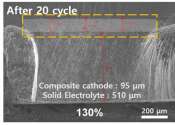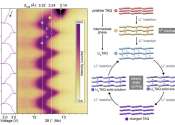A supramolecular organo-ionic electrolyte that can be liquidated for recycling
A team of molecular foundry and energy storage engineers at Lawrence Berkeley National Laboratory has developed an electrolyte material for use in solid state batteries that allows for reuse of cathodes at up to 90% capacity. ...









